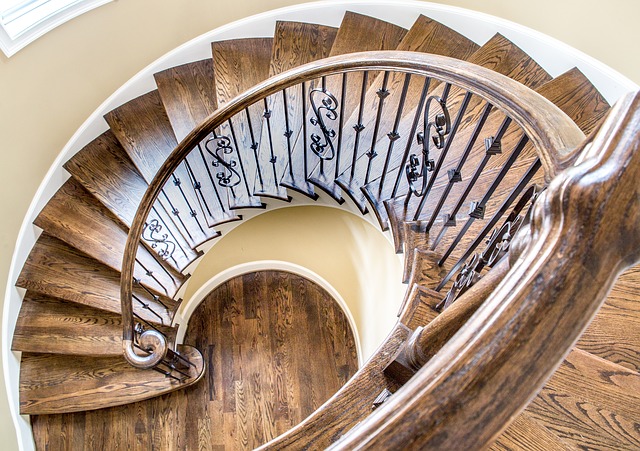Whether you are a seasoned veteran or a timid beginner, everyone that considers themselves an investor had better have some idea of what a buyers list is. Put simply, a buyers list is nothing more than a series of names that have been deemed “valuable” at one point or another to respective investors. Think of a buyers list as an address book, with one special caveat: every name on your buyers list represents a potential buyer for each one of your real estate deals.
A buyers list is just that: a list of willing and able buyers who could serve as potential suitors for your next deal. It’s worth noting, however, that not all buyers lists are created equal. Some are meticulously crafted over years, and others are thrown together with the hopes of getting lucky. The latter, of course, is no way to go about building a buyers list. The former, however, is the approach I highly recommend.
Maintenance & Upkeep
Building a buyers list isn’t a “set it and forget it” sort of endeavor. Not unlike the relationships you develop over the years as an investor, your buyers list must be nurtured and maintained. With that in mind, it’s not enough to simply add a name to your list and do nothing else with it.
If you have done your job correctly, that name is on your list for a reason. At one point, you decided that the contact could contribute, in one way or another, to your own business. So if you not only intend to keep the name on your list, but also keep it relevant, you need to see to it that you are doing everything you can to maintain the relationship.
I recommend reaching out to those individuals on your buyers list once in a while to check in. First and foremost, address their personal life. It’s not a bad idea to invite them to a cup of coffee just to catch up and let them know you were thinking about them. Remember, real estate is a people business; it always has been and always will be. The more you can do to foster healthy relationships, the better — and your buyers list is no exception.
With the formalities accounted for, proceed to dig a little deeper. Most notably, ask the individual if they are still interested in the same type of properties in the same price range. You may be surprised to hear that their taste in properties has changed immensely, or perhaps dissipated altogether. But you will never know until you ask. So do yourself a favor and keep up with your buyers list. You won’t know what has changed unless you reconnect with your original contacts occasionally. What’s more, doing so could strengthen the relationship you already have.
Quality Over Quantity
We have all heard it before: real estate is a numbers game. It only makes sense that the more deals you have access to, the better off your business will be. You could argue that the greater the number of leads you acquire, the better your chances will be to find a deal, and you wouldn’t be wrong. Anything you can do to place the odds of landing a hot lead in your favor should be taken into consideration. It’s worth noting, however, that while real estate is in fact a numbers game, there is a fine line that can’t be ignored. While quantity is great, it’s no substitute for quality. And nowhere is the need for quality over quantity more important than on a respective investor’s buyers list.

While a large buyers list can go a long way in instilling confidence in some investors, quantity is in no way a replacement for quality. If for nothing else, all the potential buyers in the world won’t help you if none are willing to take action. Having said that, it’s in your best interest to vet the contacts you are willing to put on your own buyers list. That’s not to say the criteria for making your buyers list should be nearly impossible to meet, but you need to refrain from simply putting everyone you come across on it. The idea is to compile a tight list of contacts you can count on. You need to be confident that at least one of the buyers on your list will be willing to take action. Be sure to align yourself with those that have proven they are willing and able to take on a deal, and your buyers list will be better off.
The Devil Is In The Details
As their names suggest, buyers lists are nothing more than a list of contacts who have expressed interest in acquiring a property from you, either now or sometime in the future. It’s not the least bit hyperbolic to suggest a buyers list is nothing more than a specialized contacts lists. However, a truly great buyers list must contain so much more than the individual’s name and contact information. I maintain that the real estate investors who benefit the most from their buyers lists are the ones that take the time to detail each and every one of their entries.
It’s not enough to simply take down a name and a few points of contact; you must include personal information and perhaps even a few takeaways from each time you strike up a conversation. That way, you will have a point of reference each and every time you contact the respective individual. If, for instance, you are able to not only remember personal touches about someone, but also bring them up the next time you talk, your diligence could very easily help you build a working rapport. It goes without saying, but people appreciate when you take the time to prioritize personal relationships over the work at hand.
So the next time you add a contact to your buyers list, be sure to take diligent notes of the conversations you have had up to that point. What types of properties do they like? What type of funding will they primarily be using? And, perhaps even more importantly, some personal notes to strike up an engaging conversation the next time you meet.
Organization
Not only must a great buyers list consist of detailed accounts of every individual, but it must also be organized in a way that is conducive to both speed of implementation and facilitating deals. In other words, it’s not enough to simply have the information at your fingertips; you need to be able to navigate it with speed and precision. That means your contacts must be arranged in a way that transcends alphabetical order.
I recommend organizing your buyers list into several categories. For starters, identify your most promising contacts; they are the ones that you will want to prioritize in the event you acquire a deal. If you are familiar with those people on your list that are more likely to to action, there is no reason you shouldn’t contact them first.
Moving on from your most promising contacts (those willing to act), I would recommend identifying the types of properties each individual is interested in. Provided you took detailed notes, you should know exactly what everyone on your list is looking for. Whether they covet single-family homes or are more inclined to lean in favor of multifamily properties, you need to know. With the information in hand, proceed to organize your buyers list in a way that groups together like-minded investors; those looking for the same types of properties. That way, you will know exactly where to look in the event you land a 20 unit apartment complex or a single-family tract home. We buy houses Grand Prairie
Again, not all buyers lists are created equal. Today’s post prolific investors are more than aware that a great buyers list can result in unparalleled success, and it’s about time you realized it, too. In order to maximize the results you get from your own buyers list, may I recommend following these four steps. Your business and your bottom line will be glad you did.
